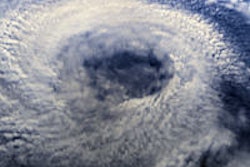
Interruptions to radiology department workflow due to IT network downtimes are common, but most are easily fixable, according to a new study published online in the Journal of the American College of Radiology.
This is good news for practices seeking to serve hospitals and outpatient centers in their area, according to lead author Dr. Murray Becker, PhD, from University Radiology in East Brunswick, NJ, and Rutgers Robert Wood Johnson Medical School.
 Dr. Murray Becker, PhD, from University Radiology.
Dr. Murray Becker, PhD, from University Radiology."As the delivery of healthcare continues to consolidate, with hospitals and practices merging, radiologists who serve these facilities need to aggregate data and distribute it back to the originating group quickly," Becker told AuntMinnie.com. "It's crucial to create a unified reading environment that can interface with disparate IT systems."
Up and running
So how well does a unified reading system perform in terms of staying up and running? Becker and colleagues addressed this question using University Radiology's IT system and tracking all IT unplanned downtimes over a 12-month period. University Radiology performs all interpretations for approximately 900,000 studies per year; no nighthawk services are used, and studies come from six hospitals, 10 outpatient imaging centers, and multiple low-volume off-hours sites (JACR, February 14, 2015).
The researchers measured five downtime characteristics: duration, cause, failure type, extent, and severity (i.e., impact on radiologist workflow).
Over the course of a year, 117 unplanned interruptions occurred:
- Duration: 35% of downtimes were less than 1.5 hours and 30% were less than 12 hours.
- Cause: 87% were due to software malfunctions, while 13% were due to hardware issues.
- Failure type: 88% were temporary component failures and 12% were complete component failures.
- Extent: All sites experienced downtimes, but no system-wide downtimes occurred.
- Severity: 47% of the downtimes had minimal impact (no disruption of radiologists' ability to create final reports), 50% had moderate impact (less than an hour of interruption), and 3% had severe impact (disruption of radiologists' ability to create final reports for more than an hour).
Most interruptions can be resolved promptly because they're caused by software issues that can be fixed with a system reboot or reset. Such interventions can be done by a local or remote staff IT member or a vendor service engineer, Becker and colleagues wrote. These types of downtimes usually involve the HL7 or DICOM interfaces or are caused by a DICOM router going offline.
"What we found is that when you connect many disparate systems together, there are certainly glitches -- mostly one system losing connection with another -- but these problems are usually short-lived and easily fixed," Becker told AuntMinnie.com. "Our big concern was that we'd experience large network or hardware outages, but that wasn't the case."
One of the most encouraging findings of the study is that creating an IT system that serves many disparate facilities doesn't necessarily require custom parts, according to Becker.
"Practices can create IT systems that provide service to multiple sites from off-the-shelf components," he said.




















